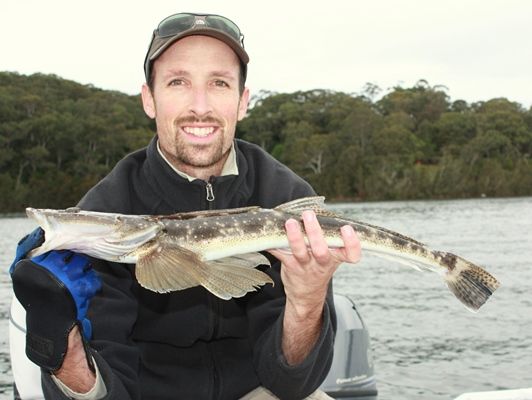Latest News
Holed up for the winter
Monday, 23 June 2014
The rolling grassy hills of the high country are living up to their name: it’s finally snowing in the Snowy Mountains.
The well-trodden banks along the alpine rivers get a rest now, with the trout fishing season closed until October. Anglers who spent their weekends seeking trophy-sized trout may be thinking that it’s time to dust off the skis and head to the resorts, or book that overseas holiday, or prepare a groove in the couch and settle in. So what are the fishing options for the middle of winter?
You may have low expectations (especially given the variable weather) but the fishing is still good along the South Coast estuaries and surrounding beaches. Both bait and lure anglers are crossing paths with small hunting packs of tailor as they patrol the surf gutters and holes. Salmon are also around and if you’re lucky enough to encounter a school you can catch a fish a cast. But if standing motionless in a cold wind with a surf rod and bait doesn’t appeal, a great alternative is walking along the sand hurling 20-40 gram metal lures into likely looking water. You’ll soon warm up, especially once you connect with one of these magnificent sport fish on light spin tackle.
At Wallaga Lake, we found that the action around the lake mouth was frantic towards the top of the tide. Bream were hitting poppers and in the distance they could be heard ‘sipping’ prawns off the surface. The razor gang of big tailor were also in town – you’ll need to hang on when they take a bait or lure in shallow water. Timing is important though: we returned to the mouth on a falling tide and there wasn’t a fish to be seen.
It’s worth noting that sea surface temperatures are currently 20-22 degrees along the South Coast and the incoming tide is bringing warm water into the lower reaches of the rivers and estuaries. There has also been widespread and consistent rain at the top of the catchment, pushing saltier water further down the river. This saltier water is heavier than the fresh, and as the salt water sinks deeper it often seems that the fish sink down too: the most consistent spots at Wallaga are 3-6 metres deep. There are plenty of nice-sized flathead, the occasional bream, and even gurnard, which were a surprise catch on small metal vibes. Baby snapper around 10-15 centimetres are prolific and there are some beautiful fish up to 30-40 centimetres among them. Slowly hopping narrow-profile prawn and minnow style soft plastics worked well.
At Tuross Lake, the spots etched in our mind from successful trips in summer and autumn now looked dull and lifeless — and the fishing was similar. Instead, we again found that the deeper holes and channels in the lower reaches were much more fruitful. In one patch it was nearly a flathead a cast with half a dozen smaller (possibly male) fish reaching the boat, before we finally caught a bigger female of 63 centimetres. I’ve heard of this phenomenon before, but assumed it would be during the spawning season from November to March. Perhaps they were just cuddled up to stay warm?
Speaking of staying warm, judging by the lack of crowds on the coast we may be braver than some, but warm dinners of homemade fish and chips proved we are not foolish. Yes, there will be days when the lure of the couch will win out over the cold aluminium hull of the tinny. But there are still plenty of good fishing options available. Thanks to the rain and warm ocean currents, the fish seem to be holed up in the deeper sections of the beaches and lakes, which means you don’t need to be holed up for the winter.
Graham Fifield
Flickandflyjournal.com
Tags Graham Fifield Trout salmon



